French and Indian War: French Army uniforms in Canada
The publication of the German translation of Muskets & Tomahawks is getting closer and here and there you can see eager wargamers digging up new collections so that they can get started as soon as the book is available.
In order to simplify the search for the correct painting, I would like to briefly summarize here how the regular armed forces were uniformed in the French and Indian War. First of all, however, it should be said that many soldiers on campaigns no longer took the regulations very seriously. French regulars, who were not stationed in a fort or city, often wore the same clothes in the field as the Canadian militia, adorned with some uniform parts. For the French crown, North America was only a side war scene anyway, and far fewer soldiers were sent there than the English did. The supply situation was also moderate at best, since the British had sovereignty at sea.
But this is primarily about the regular uniforms. Basically it was white, in reality it was rather light gray. Regiments differed mainly in the colors of the vests, lapels and decorative elements such as buttons and the hem of the hats. In addition, each regiment had an individual flag. Flags are a real topic among most Wargamers at this time and can easily lead to discussions. The fact that each state handled this differently does not make it easier.For the French army, the regiment was more of an administrative unit than a tactical element. A regiment consisted of several battalions and these were the actual combat units. The first battalion carried the king's flag, a white cross on a white background. Incidentally, this looks far cooler than you might imagine now, even if many people might come up with various jokes about French soldiers and white flags.All other battalions - there was usually at least one more - carried the actual, individual regimental flag. This is important insofar as almost all battalions in America were not the 1st battalion, so they did not carry the white flag. But more on that later.
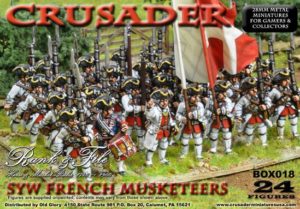
Crusader Miniatures shows a regiment from the Seven Years War in Europe. Either way, the representation of the flags is not correct. No French battalion carried two flags.
The main force
Those regiments that participated in several important battles are listed below in the order of their regiment numbers. A reference to the flag and a short description of the uniform follows.
Regiment No. 24 - La Reine
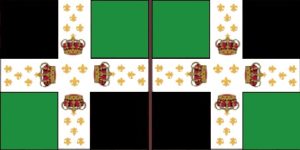
Eight companies of the 2nd battalion reached Quebec in 1755. The regiment fought at Fort George, Fort William Henry, at Carillon, in the Battle of Sainte-Foy and surrendered in Montreal in 1760.
Coat: white-gray
Cuffs: red
Collar: red
Waistcoat: red in Canada, blue in Europe
Breeches: white-gray
Buttons: tin
Hat hem: silver
Regiment No. 34 - La Sarre
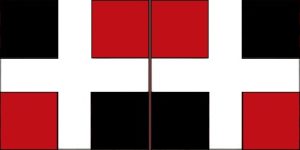
The 2nd Battalion reached Canada in May 1756, fought at Fort Oswego, Fort William Henry, at Carillon, Montmorency Falls, on the Abraham plane, around Fort Niagara, at the Battle of Sainte-Foy, and surrendered in Montreal in 1760.
Coat: white-gray
Cuffs: blue
Collar: blue
Waistcoat: red
Breeches: white-gray
Buttons: brass
Hat hem: gold
Regiment No. 37 - Royal-Roussillon
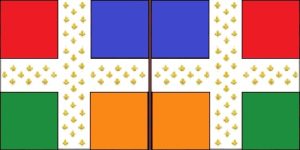
The 2nd Battalion reached Canada in May 1756 and fought at Fort William Henry, Carillon, Montmorency Falls, the Abrahamic plain, Fort Niagara and the Battle of Sainte-Foy. It surrendered in Montreal in 1760.
Coat: white-gray
Cuffs: blue
Collar: blue
Waistcoat: blue
Breeches: white-gray
Buttons: brass
Hat hem: gold
Regiment No. 53 - Languedoc
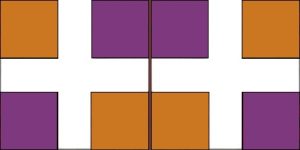
The 2nd Battalion reached Canada in the summer of 1755, fighting at Fort George, Fort William Henry, at Carillon, Montmorency Falls, on the Plains of Abraham, around Fort Niagara and at the Battle of Sainte-Foy. It surrendered in Montreal in 1760.
Coat: white-gray
Cuffs: blue
Collar: blue
Waistcoat: blue
Breeches: white-gray
Buttons: brass
Hat hem: gold
Regiment No. 68 - Guyenne

The 2nd Battalion reached Canada at the end of June 1755 with 13 companies. It fought at Fort Oswego, Fort William Henry, at Carillon, Montmorency Falls, on the Abraham plane, for Fort Niagara, in the Battle of Sainte-Foy, and surrendered in Montreal in 1760.
Coat: white-gray
Cuffs: red
Collar: red
Waistcoat: red
Breeches: white-gray
Buttons: brass
Hat hem: gold
Regiment No. 71 - Berry
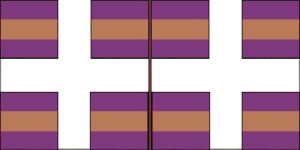
The 2nd and 3rd Battalions reached Canada in late summer 1757, but suffered losses from an epidemic that broke out on the transport ships. The battalions fought at Carillon, at Montmorency Falls, on the Plains of Abraham, at the Battle of Sainte-Foy and surrendered in Montreal in 1760.
Coat: white-gray
Cuffs: red
Collar: red
Waistcoat: red
Breeches: white-gray
Buttons: brass
Hat hem: gold
Regiment No. 72 - Béarn
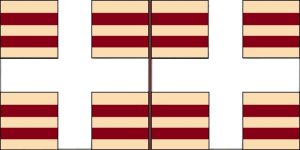
In June 1755, the 2nd Battalion reached Canada with 13 companies. It fought at Fort William Henry, Carillon, Montmorency Falls, the Abrahamic plain, Fort Niagara and the Battle of Sainte-Foy. It surrendered in Montreal in 1760.
Coat: white-gray
Cuffs: red
Collar: red
Waistcoat: red
Breeches: white-gray
Buttons: brass
Hat hem: gold
Other regiments in America
The Artois, Bourgogne and Cambis regiments defended the fortress and city during the siege of Louisbourg. Here, too, only the 2nd battalion was deployed. The understaffed Angoumois Regiment was deployed to New Orleans with almost 700 men. About a quarter of the soldiers were captured by the British at sea, the rest reached the city in April 1762 and remained there without enemy contact until 1766.
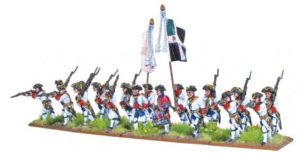
Warlord Games also always shows its French regiments with two flags. The box also comes with a white flag, two flag-bearers and lots of different regimental flags for North America.
Grenadiers
Each battalion had a company of grenadiers. These were the battalion's elite. It was customary to group the grenadier companies into one formation before a battle. Typically, the French grenadiers are depicted with impressive fur hats and not the three-cornered hats of the other soldiers and you also get corresponding models. In fact, these headgear only became common in France from 1759, before a grenadier wore exactly the same shape as the rest of the soldiers in his regiment, the mustache was often the trademark of the grenadiers. There are contemporary depictions of grenadiers with fur hats in Canada, which seems logical inasmuch as you were sitting at the source when it came to the raw material.
Musicians
In the Canadian battalions, the musicians probably all wore the king's livery. This clearly differentiated them from the other soldiers. The skirt was blue, the vest and trousers were red, the cuffs and collar were red with gold decorations. The hat was lined with gold, buttons made of brass.
Artillery
Artillery men wore the same uniform everywhere. The skirt was blue with a red collar and red cuffs. The vest and pants were also red. The hat was lined with gold, the buttons made of brass.

In their own gallery, Front Rank shows a correct representation of a battalion of the Picardy Regiment from the Seven Years' War. The regiment was unusually large, so it is impossible to tell whether this is 2nd, 3rd or 4th Battalion.
You could of course write whole books about uniforms of the time and you will be able to say a lot more in detail than I have collected here. I do not claim to be complete, with this article I only want to offer a small guide for painting historical figures. If you have different information about mine, please let me know.












Leave a Reply